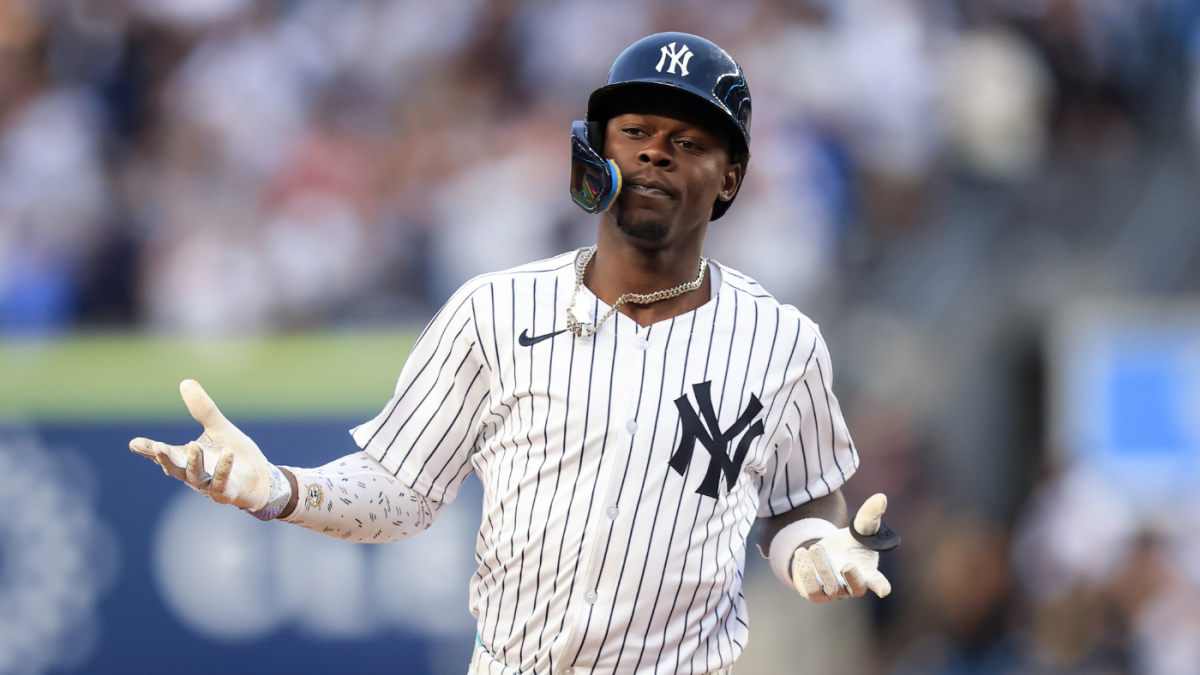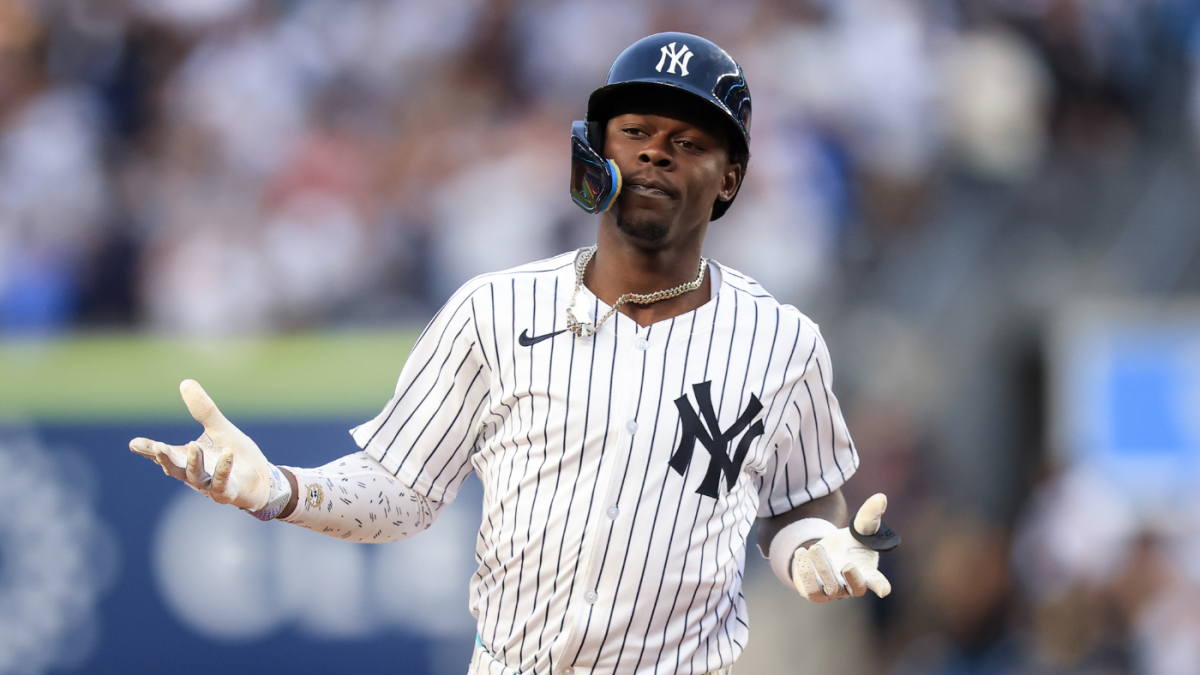Jazz Chisholm Jr., the dynamic infielder for the New York Yankees, has captured attention not just for his on-field prowess but also for his unconventional approach to athletic performance. At the heart of his philosophy lies “The Seventy Percent Solution,” a strategic framework that challenges the traditional notion of relentless effort. This concept suggests that giving a measured, calculated effort—around 70 percent—can lead to better results, sustainability, and mental clarity. Chisholm’s embrace of this approach has sparked a broader conversation about the balance between exertion and efficiency in sports.
The Dawn of a New Approach
Chisholm’s perspective defies the conventional wisdom that champions giving 100 percent effort at all times. For decades, athletes, coaches, and fans have been conditioned to believe that maxing out—pushing oneself to 110 percent—is the hallmark of dedication and greatness. However, Chisholm introduces a counter-narrative, emphasizing the smart use of effort, control, and energy management. This isn’t about complacency; it’s about strategic restraint.
In the context of baseball, which demands physical endurance, mental acuity, and emotional stability, Chisholm’s approach demonstrates that performance isn’t solely about absolute exertion. It’s about knowing when to push forward and when to conserve, thereby preventing burnout, injury, or mental fatigue. This philosophy aligns with modern sports science, which increasingly recognizes the importance of recovery and mental health in athletic performance.
Understanding “The Seventy Percent Solution”
The Seventy Percent Solution involves deliberately limiting one’s intensity or effort level to 70 percent during performance—whether in batting, fielding, or overall game management. The implications of this approach are multi-layered:
– Physical sustainability: Athletes often overexert, especially during long seasons. By consciously dialing back effort to 70 percent, they can maintain higher levels of performance over extended periods, reducing injury risk and fatigue. This is particularly relevant in baseball, where the season spans over 160 games, demanding both physical and mental stamina.
– Mental clarity: Overexerting can lead to mental clutter, mistakes, or loss of focus. Giving a steady, controlled effort offers clarity, reduces anxiety, and fosters adaptability. Chisholm’s own words, as reported, reveal that he’s thriving by “just going at 70 percent,” which is a significant departure from the “all-out effort” mindset that many athletes adopt.
– Strategic execution: Instead of reckless intensity, Chisholm’s approach promotes precision and control—improving decision-making on the field. This is evident in his improved batting average, power numbers, and defensive contributions, which suggest that “controlled chaos” might be the secret recipe for sustained success.
Impact on Performance and Perception
The transformation in Chisholm’s gameplay is striking. Since adopting this approach, his batting average, power numbers, and defensive contributions have been notable. Articles highlight his home runs, RBIs, and fielding prowess, suggesting that his method leads to more consistent and sustainable performance. The narrative pushes beyond mere stats—it’s about a sustainable, intelligent approach that disrupts traditional hustle-focused stereotypes.
Pitchers and coaches also observe the difference. Marcus Stroman, a fellow Yankees player, praises Chisholm’s defense, which has improved alongside his offensive output. The coaching staff seems increasingly receptive to non-traditional, psychological strategies that prioritize quality over sheer effort volume. This shift in perception underscores the growing recognition of the value of mental and strategic approaches in sports.
Broader Implications in Sports Culture
Chisholm’s “Seventy Percent Solution” challenges the long-standing adage that effort must be maximal to be effective. It dovetails with modern sports science, which emphasizes recovery, mental health, and sustainable training systems. For athletes, especially those facing intense seasons, the strategy encourages self-awareness and energy management, akin to a high-performance business model focusing on efficiency rather than overtime.
This narrative also resonates beyond baseball. In athletic disciplines like running, cycling, or even esports, strategic effort management is gaining popularity. It offers a blueprint for avoiding burnout while maintaining peak performance over time. By sharing his own experience publicly, Chisholm provides a blueprint for aspiring athletes seeking longevity and consistency.
Psychological Dimensions of the “70% Effort” Philosophy
Adopting this method requires profound mental discipline. Athletes must resist societal pressures, internal urges, and sometimes, coaching directives to always give full effort. It involves trusting the process, emphasizing quality over quantity, and embracing controlled performance.
Chisholm’s approach could be seen as a mental liberation—a way to detach self-worth from constant hustle and embrace a more mindful, sustainable athletic identity. For many players, this might reduce performance anxiety, burnout, and health issues linked to overtraining. Over time, it can foster a healthier relationship with sport and competition.
Potential Criticisms and Limitations
While compelling, “The Seventy Percent Solution” isn’t without skeptics. Some purists believe that maximum effort is necessary, especially in high-stakes moments or clutch situations. There’s a concern that dialing back effort might be misinterpreted as motivational complacency.
However, Chisholm’s success indicates that it’s not about giving less overall effort but about modulating effort intelligently. The key lies in context—knowing when to push, when to hold back, and how to execute with precision. This nuanced understanding of effort management is crucial for athletes looking to balance performance with sustainability.
Conclusion: Redefining Athletic Excellence
Jazz Chisholm Jr.’s “Seventy Percent Solution” invites a reevaluation of what it means to perform at peak levels. It exemplifies a modern harmony between physical exertion, mental clarity, and strategic restraint—paving the way toward a more sustainable and mentally balanced athletic culture.
The profound takeaway: Winning isn’t always about going all out. Sometimes, it’s about going smart. In a sport and society increasingly valuing mental health and long-term sustainability, Chisholm’s innovative approach might just be the spark that transforms countless game plans and mindsets across the athletic world. His philosophy challenges the status quo and offers a fresh perspective on achieving excellence in sports and beyond.












